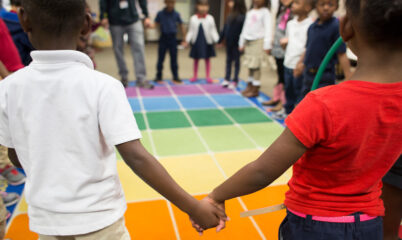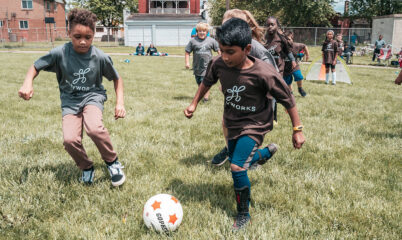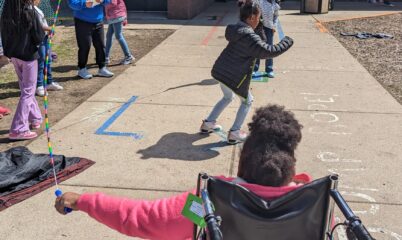San Francisco— New research published in the August issue of the Journal of School Health shows a steady and significant decline in the emotional health of California’s low-income elementary school students. The downward trend is a cause for concern among education and health experts who see emotional factors — like the ability to feel safe, trust adults and solve problems — as preconditions for success in school and in life.
“The bad news is that low-income students are struggling emotionally more today than they were a decade ago,” said Kristine Madsen, MD, MPH, who spearheaded the research at the University of California, San Francisco’s Department of Pediatrics. “The good news is that there are very practical steps schools can take to reverse these trends.”
The study relied on data from the California Healthy Kids Survey in 158 Bay Area school districts to determine how the experiences of low-income 5th graders had changed from 2001 to 2007. Overall, the researchers uncovered significant declines across several key indicators of emotional health, including whether students:
- Felt safe in school;
- Felt there was an adult in school who cared about them;
- Could express empathy;
- Had friends who were a positive influence on them; and
- Felt like they could solve problems in their lives.
REASON FOR HOPE
The researchers also saw reason for hope at low-income schools in Bay Area districts using an innovative program, called Playworks, to expose kids to more opportunities for physical play during recess and other parts of the day. Students at Playworks schools felt safer and expressed greater commitment to and participation in their school than their peers in other schools. They reported significant increases in physical activity as well.
Watch a three-minute documentary of one elementary school before and after Playworks was introduced.
“School-based play time not only improves the physical health of students, but leads to stronger emotional resiliency,” said Madsen added. “Students exposed to Playworks had significantly higher levels of physical activity, problem-solving skills, meaningful participation in school, and goals and aspirations, which are associated with positive social and academic outcomes.”
Since the implementation of No Child Left Behind in 2001, elementary school districts report decreasing time for recess, physical education, art and music by 32 percent, partially in order to prioritize on improving standardized test scores. These cuts are more likely to impact low-income students, who face a wide range of other stress factors outside of school, from unsafe neighborhoods to family instability, and who rely disproportionately on their school for healthy social, emotional and physical development.
“These kids face major social and emotional barriers before they ever step into the classroom,” explains Nancy Barrand, senior program officer at the Robert Wood Johnson Foundation, which is helping to fund a major expansion of Playworks to low-income schools nationwide. “The choice before us is whether we want our schools to make things worse or to make things better.”
The UCSF study is the first to compare physical and emotional health outcomes between students who receive Playworks and control students. In another evaluation, the Harvard Family Research Project credited Playworks with improving cooperation among students and strengthening bonds among students and between kids and adults in school. In Baltimore, the Open Society Institute saw suspensions plummet at schools that partnered with Playworks.
“Every school day for the past 15 years, we’ve been placing enthusiastic, trained adults on school playgrounds all around the country. We see firsthand what kids need to grow and succeed,” explains Jill Vialet, CEO and founder of Playworks. “Among the most important are caring adults, supportive peers, safe places to play, and tools to help them resolve conflicts. And that’s what we provide.”
About The Robert Wood Johnson Foundation
The Robert Wood Johnson Foundation focuses on the pressing health and health care issues facing our country. As the nation's largest philanthropy devoted exclusively to health and health care, the Foundation works with a diverse group of organizations and individuals to identify solutions and achieve comprehensive, measurable and timely change. For nearly 40 years the Foundation has brought experience, commitment, and a rigorous, balanced approach to the problems that affect the health and health care of those it serves. When it comes to helping Americans lead healthier lives and get the care they need, the Foundation expects to make a difference in your lifetime. For more information, visit www.rwjf.org.
# # #


